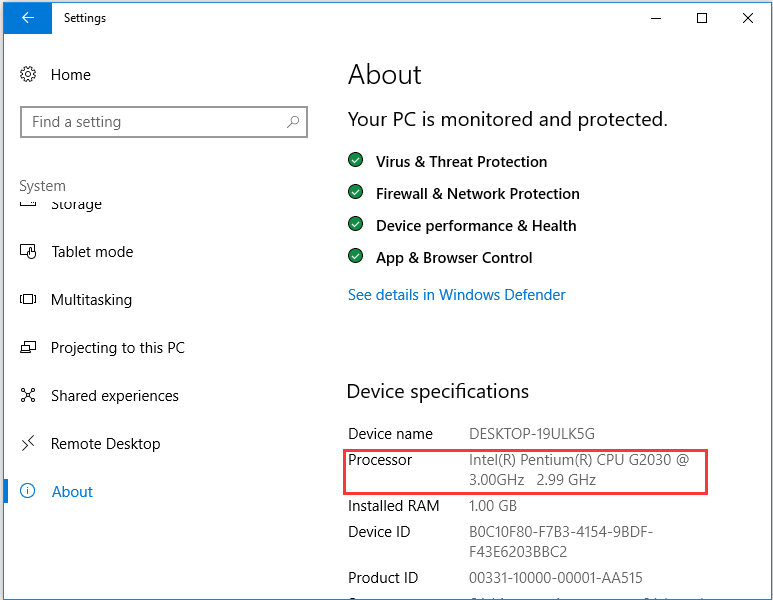
- MICROSOFT STANDARD SATA AHCI CONTROLLER DRIVER WINDOWS 10 HOW TO
- MICROSOFT STANDARD SATA AHCI CONTROLLER DRIVER WINDOWS 10 INSTALL
- MICROSOFT STANDARD SATA AHCI CONTROLLER DRIVER WINDOWS 10 DRIVERS
- MICROSOFT STANDARD SATA AHCI CONTROLLER DRIVER WINDOWS 10 UPDATE
- MICROSOFT STANDARD SATA AHCI CONTROLLER DRIVER WINDOWS 10 DRIVER
This will help if you installed an incorrect or mismatched driver. Try to set a system restore point before installing a device driver.
MICROSOFT STANDARD SATA AHCI CONTROLLER DRIVER WINDOWS 10 DRIVER
It is highly recommended to always use the most recent driver version available. In addition to that, don’t forget to constantly check with our website so that you don’t miss a single new release. So, if you intend to modify the SATA settings to the mode described by this release, click the download button, and make the desired changes. Afterwards, perform a system reboot so that all changes take effect, enter BIOS menu, and set the SATA option to the mode that best describes the newly applied drivers. To perform the latter task, get the package, run the available setup and follow the instructions displayed on-screen for a complete installation.
MICROSOFT STANDARD SATA AHCI CONTROLLER DRIVER WINDOWS 10 DRIVERS
If you want to change from one mode to another after the OS has been applied, appropriate drivers are required.īear in mind that if you modify these settings without installing proper files first, the operating system will not be able to boot until changes are reverted or required drivers are applied.
MICROSOFT STANDARD SATA AHCI CONTROLLER DRIVER WINDOWS 10 INSTALL
When you install an operating system, SATA settings (be it AHCI, RAID, or IDE mode) are detected from the BIOS. Browse to the folder where you extracted the driver and click Ok About SATA / AHCI / RAID Driver:
MICROSOFT STANDARD SATA AHCI CONTROLLER DRIVER WINDOWS 10 UPDATE
If you already have the driver installed and want to update to a newer version got to "Let me pick from a list of device drivers on my computer"ħ. Choose to select the location of the new driver manually and browse to the folder where you extracted the driverĥ. Right click on the hardware device you wish to update and choose Update Driver SoftwareĤ. Go to Device Manager (right click on My Computer, choose Manage and then find Device Manager in the left panel), or right click on Start Menu for Windows 10 and select Device Managerģ. In order to manually update your driver, follow the steps below (the next steps):ġ. Take into consideration that is not recommended to install the driver on Operating Systems other than stated ones. If the driver is already installed on your system, updating (overwrite-installing) may fix various issues, add new functions, or just upgrade to the available version. Protected, to install the driver, monitoring directory tree and registry changes with some auxiliary programs, and this is OK, too).The package provides the installation files for AMD SATA Controller Driver version 1.3.1.276. It has been quite straightforward (for more difficult components, when the installer is an EXE file, I use that general purpose XPe image, which is EWF Numbers, to use this information to find the correct INF file to import to create new components. I use to have a general purpose XPe in a bootable USB flash drive to check the "unknown devices" PCI VEN and DEV All I have to do is to assemble all neededįiles in a folder, assign this folder to a new repository, assign this repository to all new imported components, and basically that's it. Intel drivers are (normally) quite easy to import, as the INF file imports all group membership, needed files, registry entries and resources (including the device PnP and service data information), including PnPIDs. Is it possible this file is the real problem? Or is this behaviour common when the component is not correctly configured?

The strange part is that, when I try the install booting the board as AHCI, the BSOD points to iaStor.sys. Using the final image in a flash DOM, but in IDE mode, I have found that the DEV1E02 is assigned to "Standard Dual Channel PCI IDE Controller" instead of the new component, which I think is OK, as the board was started in IDE mode Also, if the XP Pro install CD does not have appropriate drivers for AHCI, how would I install it on the target?
MICROSOFT STANDARD SATA AHCI CONTROLLER DRIVER WINDOWS 10 HOW TO
I had never find great utility on "tap.exe", maybe I don't know how to use it properly. To a "msAHCI.inf" and "msAHCI.sys", and no matter I have done, I could not find those. In a former version of the same driver, there is a "include" in the iaAHCI.inf file referring Looking around, I've found references to a registry (" HKEY_LOCAL_MACHINE\System\CurrentControlSet\Services\Msahci") but none of my systems have this entry. Now a new motherboard (GigaByte GA-C847N), but same Intel driver, although different component (DEV=1E02 and 1E03, "Intel(R) 7 Series/C216 Chipset Family SATA AHCI Controller" and "Intel(R) 7 Series Chipset Family SATA AHCI Controller"), same procedure,īut no boot at all, always BSOD showing characteristic STOP error pointing to iaStor.sys. DEV=1C02, "Intel(R) Desktop/Workstation/Server Express Chipset SATAĪHCI Controller"), setup file resources, repository, package, etc. In a previous board (DH61DL), everything worked as expected, just imported the INF files from Inltel SATA/AHCI/RAID drivers (PCI VEN=8086. Having the same issue here with new component.


 0 kommentar(er)
0 kommentar(er)
